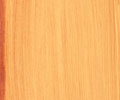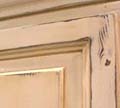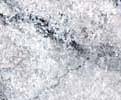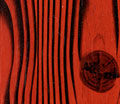|
Click here for more detailed
finishing information about the specialty finishes described on
this page. (Word Doc)
(PDF Doc) |
|
NOTE:
Refer to the products brochure for basic information on the application of
finishes and the preparation of the wood before starting. The
following information only addresses using General Finishes products to create
special effects.
|
 |
|
 Distressing
techniques
give the appearance of an antique piece of furniture that has
been used for generations. Distressing can be used in
combination with antiquing and glazing.
Distressing
techniques
give the appearance of an antique piece of furniture that has
been used for generations. Distressing can be used in
combination with antiquing and glazing. |
 |
|
 Glazing
is a classical finish that
adds a beautiful aged look to furniture. This finish is
an excellent way to age furniture for a more rustic decor.
Glazing
is a classical finish that
adds a beautiful aged look to furniture. This finish is
an excellent way to age furniture for a more rustic decor. |
 |
|
 Antiquing
is another form of distressing the wood using sanding
techniques followed by glazing,
giving
the appearance of an old piece of furniture that has been well
taken care of over the years but, has slight natural wear on
the doors, edges, or sides.
Antiquing
is another form of distressing the wood using sanding
techniques followed by glazing,
giving
the appearance of an old piece of furniture that has been well
taken care of over the years but, has slight natural wear on
the doors, edges, or sides. |
 |
|
 Wash Coats or color
wash: This free-form finish is known for its subtle
variations in color and soft natural glow. Supremely
versatile, it can be adapted to any piece of furniture,
Wash Coats or color
wash: This free-form finish is known for its subtle
variations in color and soft natural glow. Supremely
versatile, it can be adapted to any piece of furniture, |
 |
|
 Marbleizing
is a timeless decorative finish that adds interest to
furniture. When marbleizing, keep it "real".
Choose surfaces that realistically would be made of marble,
such as table or dresser tops.
Marbleizing
is a timeless decorative finish that adds interest to
furniture. When marbleizing, keep it "real".
Choose surfaces that realistically would be made of marble,
such as table or dresser tops. |
|
 |
|
 Pickling
is simply applying a light color stain to wood; then wiping
off the stain to let the color of the wood show through.
Pickling
is simply applying a light color stain to wood; then wiping
off the stain to let the color of the wood show through. |
 |
|
 Crackle adds a beautiful, worn elegance to any piece of
furniture. Within minutes, you can duplicate the effects
of years of natural weathering.
Crackle adds a beautiful, worn elegance to any piece of
furniture. Within minutes, you can duplicate the effects
of years of natural weathering. |
 |
|
 Antique Wood Graining.
Also
known as "faux bois", wood graining is a timeless wood finish
that adds warmth and beauty to any piece.
Antique Wood Graining.
Also
known as "faux bois", wood graining is a timeless wood finish
that adds warmth and beauty to any piece.
|